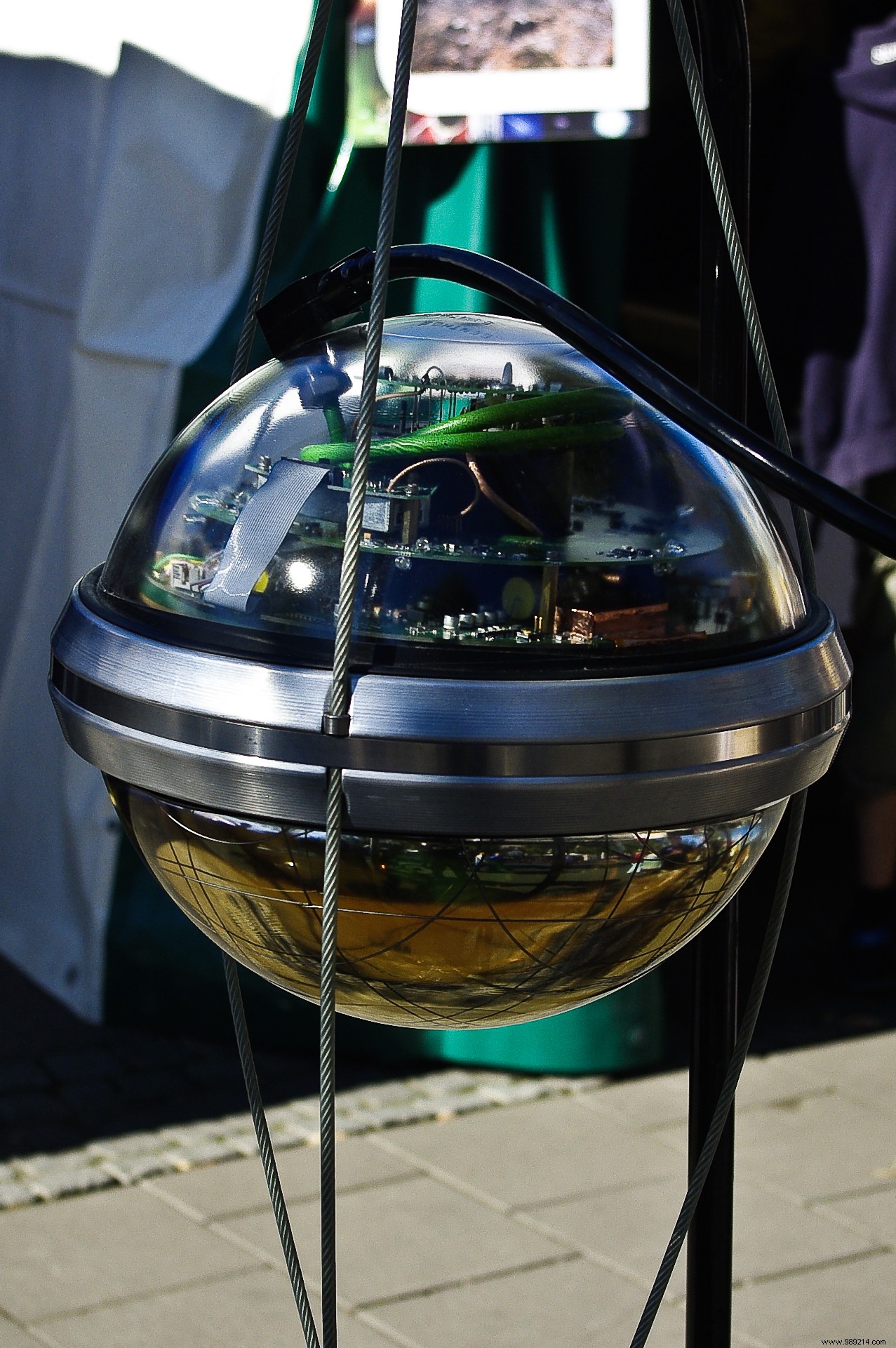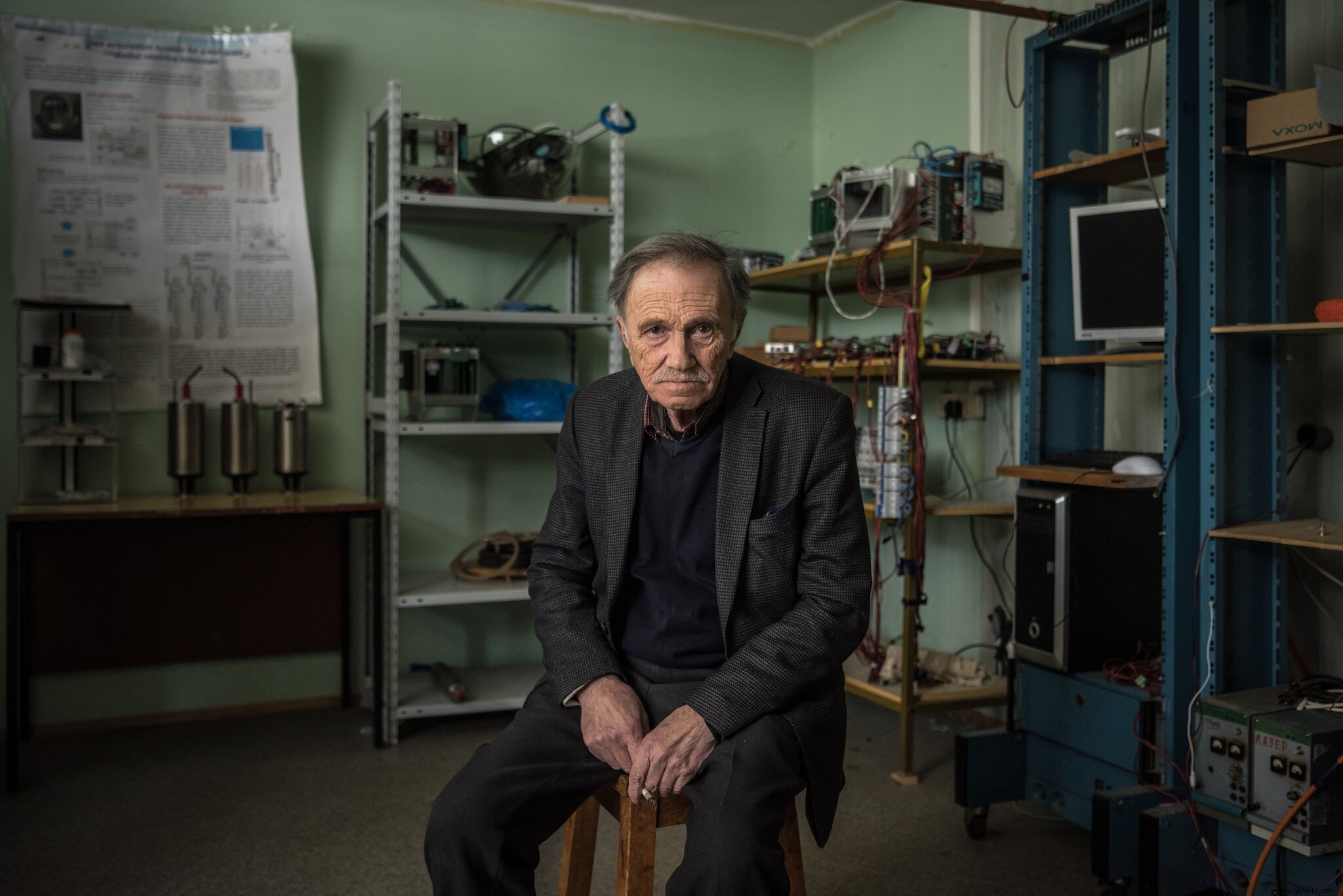In Russia, a neutrino "hunting" telescope buried deep in Lake Baikal is about to deliver first scientific results after four decades of political setbacks.
A glass orb the size of a beach ball sinks into a hole in the ice, then another, then another. A total of 36 of these light detectors, spun in a metal cable, sink into Lake Baikal more than 1200 meters deep.
More than sixty of these cables, held in place by anchors and buoys 3km from the south coast, will form this observatory designed and built to explore black holes, distant galaxies and remnants of stars. How ? By trapping neutrinos, cosmic particles so small and fleeting that several billion billions of them pass through your body every second.
If only we could learn to read the messages they convey, we could fathom some of the greatest mysteries of the universe. “You should never miss the chance to ask nature questions “, underlines Grigori V. Domogatski, 80 years old, Russian physicist at the origin of this exceptional project. "You never know what answer you'll get . »
The Lake Baikal Adventure isn't the only effort to track down these ghostly particles in the most remote places around the world. IceCube, piloted by the Americans and buried in the Antarctic ice near the South Pole station, is to date the largest neutrino detector in the world. Using a similar grid of detectors, the observatory in 2017 identified its first neutrino, which scientists believe must have come from a supermassive black hole. This new Russian project will be an important complement to the work of this facility.

The early work of Soviet scientists inspired Dr. Halzen, an astrophysicist at the University of Wisconsin, Madison, and director of IceCube.
In the 1970s, despite the Cold War, the Americans and the Soviets were indeed working together to plan a first deep-sea neutrino detector off the coast of Hawaii. After the Soviets invaded Afghanistan, the Soviets were eventually expelled from the project.
As early as 1980, the Moscow Nuclear Research Institute began its own efforts in this direction, led by Dr. Domogatsky. For the latter, Lake Baikal already sounded obvious. A first telescope was therefore developed.
This project was slow to come together due to the collapse of the Soviet Union. At that time, many scientists in the country found themselves destitute, before the German particle research center DESY finally joined the Baikal adventure.
Christian Spiering, who led the German team, remembers in particular having shipped hundreds of kilos of butter, sugar, coffee, sausages, but also salary supplements to support the Russians' annual winter ice expeditions.
As early as the mid-1990s, the Russian team had succeeded in identifying "atmospheric" neutrinos produced by collisions in the Earth's atmosphere, but not those coming directly from outer space. For that, you need a bigger detector.
As Russia began to reinvest in science in the 2000s under the thumb of Vladimir V. Putin, Dr. Domogatsky finally managed to obtain the equivalent of more than thirty million euros in funding to build a new telescope in Baikal.

Why this lake? In fact, it's the deepest in the world, but it also features some of the clearest freshwater on the planet…and a Tsarist-era railway conveniently runs along the southern shore. More importantly, it is covered with a layer of ice almost a meter thick in winter. In short, Lake Baikal is a natural platform of choice for installing an array of underwater photomultipliers.
The Baikal Telescope "looks down", across the planet, essentially using Earth as a giant sieve. Sometimes a neutrino hits an atom. This collision thus disintegrates the nucleus of the neutrino which is transformed into another particle:a muon, which can be recognized thanks to the cone of blue light which it generates (Cherenkov light).
To detect these faint flashes of light, researchers are developing arrays of spherical optical sensors (the famous orbs). Depending on the orientation of the blue cones, they can then retrace the path of the muon involved, and therefore that of its original neutrino. Having no electrical charge, neutrinos are in fact unaffected by interstellar magnetic fields and other influences that may blur trajectories.
Construction of this observatory, the largest of its kind in the northern hemisphere, began in 2015. A first phase comprising 2304 orbs suspended in the depths should be completed this month, before the ice melts. We are now awaiting the first scientific results. Let the hunt begin!